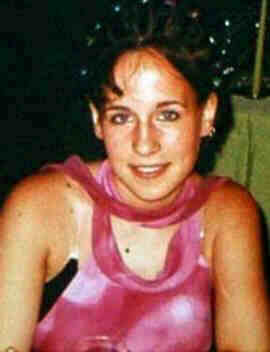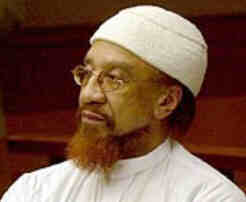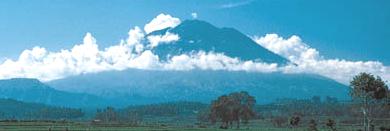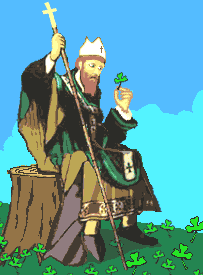 1970
US casts its first veto in the U.N. Security Council (against
condemning Britain for failure to use force to overthrow the white-ruled
government of Rhodesia.)
1970
US casts its first veto in the U.N. Security Council (against
condemning Britain for failure to use force to overthrow the white-ruled
government of Rhodesia.) 1969 Golda Meir becomes prime minister of Israel.
1967 Charlie Brown and Snoopy of Peanut comic strip appear on cover of Life magazine. [picture >]
1966 A US midget submarine locates a nuclear fusion bomb which had accidentally fallen from a US bomber into the Mediterranean off Spain.
1964 National Security Council reviews Vietnam situation. ^top^
President Lyndon B. Johnson presides over a session of the National Security Council during which Secretary of Defense McNamara and Gen. Maxwell Taylor present a full review of the situation in Vietnam. During the meeting, various secret decisions were made, including the approval of covert intelligence-gathering operations in North Vietnam; contingency plans to launch retaliatory US Air Force strikes against North Vietnamese military installations and against guerrilla sanctuaries inside the Laotian and Cambodian borders; and a long-range "program of graduated overt military pressure" against North Vietnam. President Johnson directed that planning for the bombing raids "proceed energetically." A statement issued to the public afterwards stated that the United States would increase military and economic aid to support South Vietnamese President Nguyen Khanh's new plan for fighting the Viet Cong. Khanh's intention was to mobilize all able-bodied South Vietnamese males, raise the pay and status of paramilitary forces, and provide more equipment for the South Vietnamese armed forces.
1963 Elizabeth Ann Seton of NY beatified (canonized in 1975)
1962 Fidel Castro Ruz anuncia una "purga" en el aparato del Estado cubano.
1960 Se produce el primer cambio en el Gobierno español desde 1957; dimite el ministro de la vivienda, José Luis Arrese y Magra, y le sustituye Gual Villalbí.
1959 Dwight David Eisenhower asegura que EE.UU. no retirará sus tropas de Berlín y acepta las negociaciones con la Unión Soviética.
1959 Dalai Lama flees Tibet for India.
1953 La Cámara de los Comunes británica anula la nacionalización de la industria del acero.
1950 Scientists at the University of California-Berkeley announce that they have created a new radioactive element (element 98), "californium."
1948 Firma del Pacto de Bruselas entre Benelux, Francia y Gran Bretaña, precursor del Tratado del Atlántico Norte (OTAN).
1945 Victoria electoral de los comunistas en Finlandia.
| 1940
Todt named Reich Minister for Weapons and Munitions.
^top^ Dr. Fritz Todt, an engineer and master road builder, is appointed Minister for Weapons and Munitions, ushering in a new era in the efficient use of German industry and forced labor. A civil engineer with a doctorate from the School for Advanced Technical Studies in Munich, Fritz Todt caught the attention of Adolf Hitler in 1932 as Todt spoke out about the importance of building new roads to jumpstart a moribund German economy. Once Hitler came to power, Hitler placed Todt in charge of a massive road-building project that remains remarkable today: the Autobahn, Germany's superhighway. Todt designed the Autobahn so it would "harmonize with the German landscape." One of the unintentional outcomes of the project was that it provided a working model of the use of slave labor within the Nazi regime. In February 1940, realizing that mass executions in occupied Poland were not serving the Reich efficiently, Hitler decided to create a centralized and supervised source of mass slave labor. It was Todt who was chosen to command the project. The Todt Organization became the single largest employer of slave labor in Hitler's empire, disseminating workers to shorthanded munitions plants. And as Minister for Munitions and Weapons, Todt oversaw a more efficient use of raw materials in Hitler's arms machine. Todt's engineering skills also proved useful in the war against France, with the design and construction of what was called the "West Wall," a fortress line of bunkers that divided the Franco-German border. On 08 February 1941, Todt, after a conference with various government ministries on German arms production and distribution, was killed in a plane crash en route to Berlin. He had intended to tell Hitler of his decision to increase arms production a whopping 55 percent. A state funeral was given for Todt, at which Hitler, who had come to rely heavily on the engineer, gave the eulogy. "Much of what the man has done can be made known to the German people, or brought to the amazed attention of the world, only after the war," said Hitler. "I have lost in this man one of my most faithful coworkers and friends." |
| 1930
First US ambassador to Poland.
^top^ John North Willys of the Willys-Overland Corporation becomes the first U. S. ambassador to Poland. Willys had rescued the ailing Overland firm from its woeful production of 465 cars in 1908. By 1916 Willys-Overland produced over 140,000 cars per year. Willys subsequently left the day-to-day operations of the company, moving his personal offices to New York in order to pursue work related to World War I. During his absence mismanagement nearly buried the company he had worked so hard to build up. Massive strikes, bloated inventories, and other troubles had cost Willys-Overland dearly. By 1920 the company was $46 million in debt. The briefly retired Walter Chrysler returned to rework the company’s daily operations, and in no time at all, he had cut the debt by nearly two-thirds to $18 million. Chrysler claimed, however, that without the release of a new model of automobile, the debt would decrease no further. Willys, who remained president of Willys-Overland, disagreed. He maintained that through the improvement of the existing models, the company could regain its original profit margins. Chrysler left. Continuing to pursue his political interests, Willys became the US ambassador to Poland on this day in 1930. Eight years later Poland would be absorbed into the Third Reich. Three years after that, in 1941, Willys-Overland began mass production of the Willys Jeep, the "General Purpose" vehicle of the US Army. In 1944 Willys’s political and manufacturing legacies merged symbolically as Willys Jeeps carried US troops across liberated Poland. |
1915 El Reichstag alemán aprueba, con un solo voto en contra, el presupuesto para 1915, así como el programa para financiación de la guerra.
1914 The Fifth Avenue Coach Company of New York introduced the first bus with cross-wise seats. Prior to this introduction, all buses had been equipped with longitudinal seating. The company’s double-decker buses were capable of seating forty-four passengers.
1911 Entra en vigor en China la ley de interdicción contra los fumaderos de opio y contra los malos tratos a los presos.
1906 Vicente Blasco Ibáñez renuncia al acta de diputado por Valencia.
1906 US President Theodore Roosevelt uses the term “muckrake” in a speech to the Gridiron Club in Washington, DC.
1901: 71 Van Gogh paintings shown in Paris create a sensation, eleven years after the death of Vincent van Gogh , almost unknown until this exposition. — MORE AT ART “4” MARCH — LINKS


 1963
1963